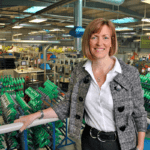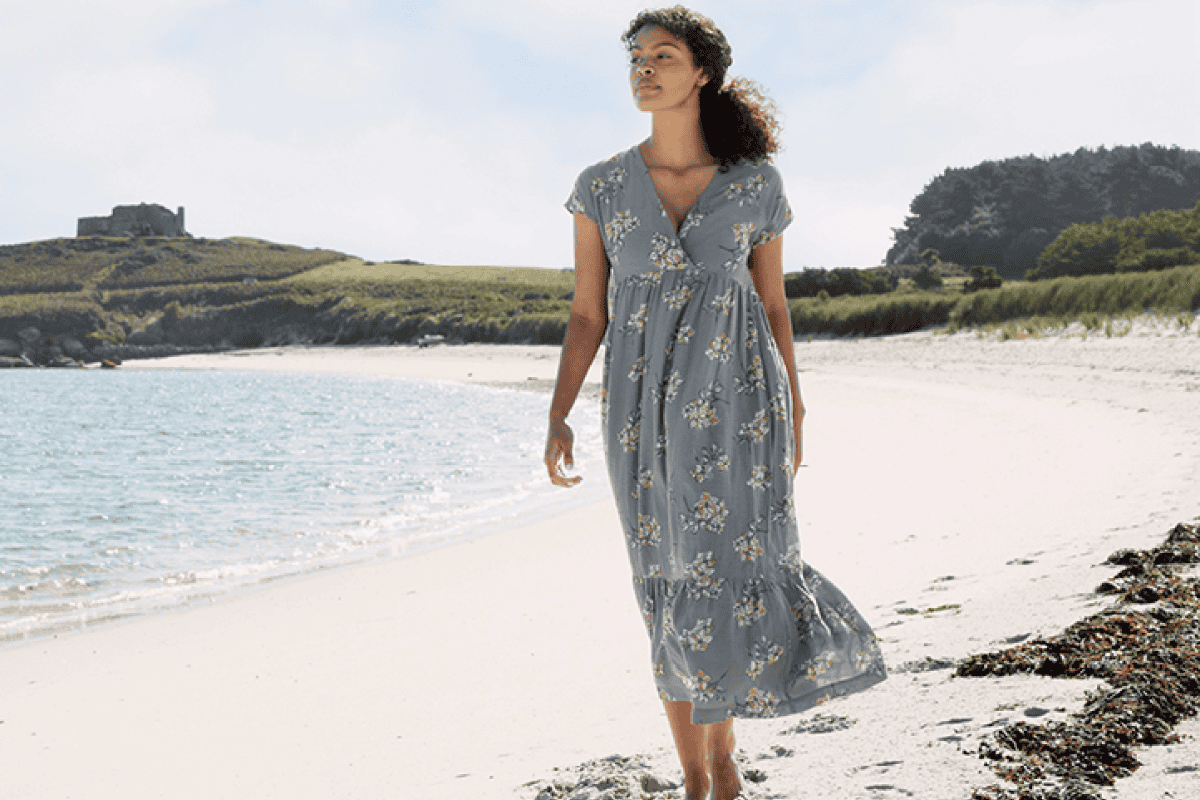Retailers that understand their customers are better placed to give them more relevant service, writes Chloe Rigby.
Shopping is just easier for customers when they are recognised by their favourite retail websites. And arguably, retail websites that recognise their customers are more likely to become favourite destinations. For when shoppers are known to retailers, they’re more likely to see web pages, products and recommendations that are relevant to them.
They can pay in as little as one click while saved delivery and collection options mean the items they buy are sent to the most convenient place at the right time. All of these little relevancies help to save time and make shopping less of a chore. It’s easy to see how such an experience might improve customer loyalty, and how retailers that give their customers such an experience might stand apart from the crowd.
Salesforce’s Connected Shoppers report suggests that only 37% of shoppers feel that retailers know them. More than half (54%) of UK consumers said they felt more loyal to brands that showed a deep understanding of their preferences and priorities, according to ecommerce consultancy Wunderman’s Wantedness playbook. The report also suggested that 74% of UK and US shoppers say brands can set new standards by providing a higher level of customer service.
The demand for service comes against a challenging retail environment in which shoppers are both slowing their spending and making a greater proportion of their retail purchases online. In its September 2018 Retail Sales Report, the UK’s Office for National Statistics found that 17.8% of all retail sales took place online that month.
But at the same time, while shoppers were spending more than they did at the same time the previous year (+4.2%) on retail purchases, they were spending less (-0.7%) then they did the previous month. Online sales may have accounted for a greater proportion of sales, but while they too grew in September 2018 compared to the previous year (+11%), they fell by 2.1% compared to the previous month.
If personalised service will make such a difference to how much of that business retailers see, then it’s little surprise that many Top500 retailers are seeing the importance of getting to know their customers and are going to sometimes great lengths to do so.
A deeper understanding
Shop Direct, the home shopping group behind brands including Littlewoods and Very, got to know some of its best customers very well as part of its focus on putting the customer at the heart of its business. Derek Harding, chief finance offer, told InternetRetailing Conference in October that Shop Direct wanted to develop services and ways of selling that were more relevant to them. To that end, it invited about 50 of its highest-spending shoppers to take part in research that used tools including surveys, eight-week video diaries and focus groups to get to know them, what they buy from the business and how they buy it.
From these in-depth findings, the business created around 50 customer personae that its staff will have front of mind as they revamp the website over coming months. “We’ll be thinking about the customer journey through the customer’s eyes, working with those customer personas to understand what works for them over mobile and desktop journeys,” said Harding.
The personalisation imperative
Fashion retailer Next has appointed a head of personalisation as it looks to build the business. Rob Pearson, who has taken on this role, explained at IRX 2018 just why personalisation was so important for the business. It was time, he said, to go beyond catering for the typical Next customer – a woman who shops for herself and her family, buying homewares as well as clothing. “The experience has been designed for her for years,” he said. “But we have other customers – who buy from Lipsy, buy male fashion, or are focused on kids. We need to engage with each while shopping. If we don’t start personalising things for people, we run the risk of losing them.” When customer services are more relevant, he noted, this leads to happier customers.
Homeware business Dunelm is also working to create experiences that work for different groups of shoppers. In its latest full-year results, it identifies segments that it underserves – including the “confident nest builders” and “necessity buyers” – and says it will meet customers’ needs by both offering a wide range of products and raising awareness of what it sells. Serving such groups more effectively is, after all, critical for the bottom line.
“By listening to our customer and serving them better, we have a significant opportunity to sell more,” said chief executive Nick Wilkinson, adding, “We continually listen to our customers and colleagues using our ‘always on’ feedback and engagement tools. Significant actions taken in response to feedback from our colleagues includes restructuring our technology teams to become more agile and product focused, and combining our buying and merchandising functions into an integrated team.”
Recognition factor
Recognising the customer is key in this. Halfords is among the retailers developing a single view of customers. In its latest results, the car to cycle equipment and services retailer said it could now match 59% of transactions to customers. This gives insights that help it to understand how and what its customers are buying.
Footwear brand Hotter, ranked Top50 in this Customer Dimension of IRUK Top500 research, is set to introduce a single view of its customers when it introduces a new platform and ERP (enterprise resource planning) system over the course of the next year.
But even while still working from legacy systems, it commissioned a project to understand how its shoppers were buying. It found that 18% were omnichannel shoppers and that those omnichannel shoppers spent five times as much as its single-channel shoppers, with customer retention rates three times higher than those that shopped through just one channel. The brand has responded, says chief executive Sara Prowse, by analysing the multichannel customer’s experience. “We’ve looked very closely at the journey on the different devices to see if we need to make changes there,” she says.
Test and learn
Understanding what works is important and such understanding is made possible through rigorous testing. Next, which uses the Monetate platform to power its personalisation, uses a test and learn programme to show what is working and what isn’t. In one example, Next saw that different people arrived via different routes and at different times to a product page. New visitors might come straight from search to a product page and miss home page messages as a result. “We tested a message to say ‘order now for next-day delivery’ and A/B split it so that 50% of new visitors saw it,” said Pearson. “Revenue and conversion rose.”
The retailer plans to continue to introduce new experiences for different groups of customers. Experiences are informed by the retailer’s data drawn from how customers behave, with hypotheses – right down to where a message is placed – tested at every turn. “The original Hepworths store [from which Next evolved] was a gentleman’s tailoring store and it had local knowledge of customers,” he says. “Data now fuels getting that insider knowledge of the customer and what’s right for the experience. Now the job is to increase conversion.”
Make sure the mobile experience is a good one
With more shoppers now opting to browse and buy via mobile phones, it’s become more important to make the shopping experience relevant for them on a small-screen device by ensuring that shoppers see the right products.
Next’s Rob Pearson says that the larger the product range, the more important personalisation becomes. “In a mobile world, there’s a smaller screen to talk to customers about what we have to offer,” he says.
That was an issue for Express Gifts, the retailer behind websites studio.co.uk and ace.co.uk. It has found that 70% of its visitors come from search, and that 70% of those shoppers are using a mobile device to find an item. It’s now using machine learning, in the form of Apptus eSales, to ensure that the results those customers see are more relevant. “In that context [of mobile searchers] it’s even more important for us to deliver a superior search experience,” says Express Gifts head of ecommerce, Craig Elwell. “There’s less screen real estate to play with, so relevance is very important. It’s vital in the limited screen space available to show shoppers the right products at the right time, every time.”
Link online with the store
Retailers are using systems from e-receipts to loyalty cards to get to know how their customers buy, or want to buy, across channels, as well as understanding what it is they are buying, and where relevant offers might be able to be delivered. Morrisons, for example, launched a Morrisons More mobile app this autumn to enable shoppers to collect and spend loyalty points. In a third-quarter trading update in November, Morrisons noted that the app is easier to use than paper coupons or plastic loyalty cards, while it also enables the supermarket to send its customers relevant recipes and personalised offers.
The John Lewis app also works across channels, giving customers access to their loyalty card, to claim and redeem rewards, as well as a ‘kitchen drawer’ store of receipts for purchases made both online and in the store.
Shoe business Clarks is another retailer that uses e-receipts to tie up online and in-store customer spending in order to gain a better understanding of its shoppers.
GIVE shoppers new reasons to visit the store
Department store shoppers are moving online fast. ONS figures show that internet sales at this category of retailer grew by more than 30% in August 2018. Retailers are responding by not only honing their online experience, but also by giving shoppers new reasons to come into their stores.
At both John Lewis and Debenhams, the focus is firmly on customer service. John Lewis has an Experience Desk at two of its most recent stores, in Oxford and at Westfield London, offering a concierge-style service for in-store events, experiences and table bookings for restaurants. It has worked with theatres to train its staff in the skills needed to give guided tours of the store, as well as with the London College of Style to train in-store personal stylists on advising shoppers and on translating catwalk trends to the changing room.
The John Lewis Partnership’s latest JLAB challenge, meanwhile, centres on experiential retail as it looks for technology companies that have solutions capable of changing the way we shop in the future, focusing on shopping as an experience rather than as a utility.
Debenhams, meanwhile, is hiring from the hospitality industry as it looks to give its shoppers top-level service. It’s focusing on beauty in its multichannel Beauty Club that provides an online social forum alongside in-store events and beauty treatments. Its new look Beauty Hall of the Future is designed to integrate digital into the in-store shopping experience.
These are just a few of the many practical, real-life examples of how retailers are finding new ways to understand their existing and potential customers and put them at the centre of their businesses.
They are also examples of how retailers are working to create new shopping experiences that work for digitally-enabled shoppers whose expectations have changed as technology evolves. The rate of this change is no doubt set to accelerate, which means that the most agile retailers will be the ones at the forefront of this change.







